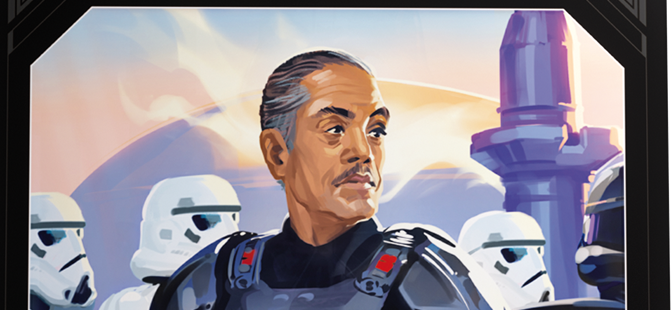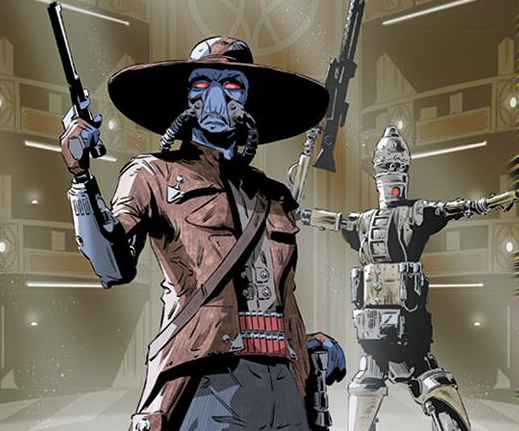Table of Contents
Pre-release is a special time. Veteran players get exciting new cards to test for their wild brews, new players get roped in by friends who promise 'this is the best time to start!' (they’re right), and everyone is eager to see what crazy pulls they’ll get.
A whole set of brand-new cards? Which ones are the best? Which aspects should you play? That’s the beauty—no one knows yet!
Every guide that comes out before the set launch has the flaw of the author having not actually played with the cards yet - but that doesn't mean that past experience is entirely useless! Some larger trends, themes, and play patterns tend to arch between sets, and we can make approximate predictions about yet unplayed sets - isn't that neat? If you want an overly in depth video guide, you can check out mine here.
What Can I Expect at Pre-Release?
The only thing you need to bring to pre-release is yourself, whatever the entry fee is at your local game store, and a basic understanding of how to play the game (like just play a few practice games & have a basic understanding of the rules, you don't need to be an expert at all).
You will be given a pre-release kit with 6 packs, 2 starter kit leaders, a leaflet explaining the basics, and a bunch of tokens.
The first thing you'll want to do - as you may expect - is open your packs. This is a little goofy of me - but honestly for the first 5 minutes of the pre-release I don't even really think about what deck I'm gonna build or any strategy. I just take my time opening the packs, look at the cool cards, maybe read a couple of them and just have a good time. I know we want to win, but at the end of the day it's a game (& pre-release is its most casual version). Let yourself have fun with it!
Once your packs are open, you're going to want to sort your cards to see what kind of deck you want to build. There is no "wrong" way to do this, just do whatever makes the most sense in your mind. It also depends how much physical space you have on the table you're doing your deck building.
I like to sort my cards into two sections and 5 piles. Heroism on my left, villainy on my right. Then I sort those by their respective aspect. Cards that are neither heroism nor villainy go in the middle.
The reason I do this is because it is actually usually pretty easy to figure out whether you're playing heroism or villainy. Look at the leaders you pulled. You'll always have at least one of heroism and one of villainy because of the two starter deck leaders. Those leaders are both pretty good! I think Boba Fett, Any Methods Necessary is particularly strong due to its consistent power level. It'll always be good. Han Solo, Never Tell Me the Odds, is also quite strong as it allows for a rather explosive flip turn, but requires more forethought and deck-building prowess for sure.
Once you have your cards separated into those two sections. Look through them. Did you open any cards that are obviously very strong that you must play? How many? How many of them are in heroism vs. villainy? This is a good basic strategy for choosing which side of the war to be on. There are exceptions, but this often will lead you towards stronger aspects.
Once you've chosen whether you're heroism or villainy, amazing! Toss the cards of the other aspect back in your deckbox and forget about them for now. Now comes the hard part, deciding your other two aspects.
What Should I be Looking for in JTL?
Removal, removal, removal.
Removal is always strong in limited. Your opponent playing a big threat that you just can't answer before you play yours will often be game ending. Being able to tell them "no" before playing your own will often ALSO be game ending (but in the good way).
In this set in particular, removal will be very strong. Even cards like Lightspeed Assault, which is a card I generally think is pretty weak, is probably decent in this format just on the basis of being removal.
Now why do I think removal is so strong here?
Pilots.
Pilots are a very high risk high reward play. On one hand, having a large unit and the agency of choosing where to attack with it will often kill several of your opponents units and threaten a dangerous amount to base. On the other hand, you've stacked two cards and who knows how many resources onto one easy target. If you play a pilot on one of your ships and your opponent has No Glory, Only Results or any other removal that's going to feel very bad. They just used one card and one action to deal with minimum two cards and two actions of yours.
That kind of value can't be found anywhere this side of Naboo.
On the other hand, having your own removal to "2 for 1" your opponent (the act of using one card to deal with two of your opponents cards, sorta) will often lead you to winning that game.
If there is one thing you should take away from this guide it is to play your removal!
Let's talk about pilots for a second. Most pilots are moderately efficient units with moderately efficient upgrades. You may feel underwhelmed by them, but they are one of the trickiest card types to evaluate the quality of.
Historically, when one card lets you choose between two different modes, that card is much better than its parts. An example for the Magic players out there, cards like Three Steps ahead overperformed a lot in Thunder Junction draft. Is countering a spell for 3 mana good in draft? Not usually, it's not amazing. Is drawing two cards and discarding one for 3 mana good? Not at all. Even at instant speed, we recently had quick study, a directly better version of this. But the card itself was very strong. Why? Because you got to CHOOSE which one you wanted! A 3 mana counterspell isn't great by any means but when you need it, it feels good. Same with drawing cards. In this case these cards also let you do both if you had enough mana, but the point still stands.
All those words to say that pilots are a bit better than they lead on. Need a decently efficient unit for a given board state? No problem. Want to break up a space stall by buffing one of your units? Also works. Just beware of the dreaded 2 for 1! If you think your opponent has removal (or better yet, in best of 3 if you've SEEN your opponent's removal)
Indirect Damage
Jump to Lightspeed also introduces a new mechanic: Indirect damage. If you deal x indirect damage to your opponent, they can choose to distribute x damage however they like to their units and base. For example, if you deal 5 indirect damage, your opponent can choose to put 1 on one unit, 2 on another unit, and 2 on their base.
Much like how giving yourself an option is very strong, giving your opponent an option is not what you want to be doing. I'm not saying indirect damage is bad, but I'm saying don't expect it to work out for you perfectly every time (unless you control Devastator, Hunting the Rebellion). Because board control is so good in limited, oftentimes good opponents will not be afraid to take a lot of indirect damage to base.
All that being said, I expect indirect damage to NOT be bad at all, and will often put your opponent in a squeeze that might give you the win, or at the very least give you some favorable trades. Just make sure your deck is built well BEFORE considering indirect damage. It'll feel like a bonus rather than a strict gameplan.
Ambush
I won't get too into it here because it's less a Jump to Lightspeed tip and more a general Star Wars Unlimited sealed and draft tip, but cards with Ambush should be valued at a premium. Oftentimes you can use them to remove one of your opponents smaller units AND get a unit of your own.... all in one action. I'll get more in depth in another article but for now, just know ambush is very strong as it will often fall into the category of two for one cards.
The Curve
As you may expect, the more resources you pay for a card, the more impactful you expect the card to be in a vacuum. But as you may also expect, drawing a hand of all 4, 5 and 6 cost cards is not a recipe for winning. You need a good mixture of card costs, but WITH EMPHASIS on 2 cost and 3 cost card.
In Magic: The Gathering, there is a lot of data from online clients about win rates of different cards in different formats. In a recent (admittedly fast) draft format, Lost Caverns of Ixalan, if you played a card on turn 1 and your opponent did not, your win rate immediately jumped up by over 5%. While we don't have the same kind of data for Star Wars Unlimited (yet.... a boy can dream), I would expect that to be similar here.
Ensuring you have good 2 and 3 cost cards (units especially) is SO important even, that I would actually shape which aspects I play around it. If I had very strong high end cards in aggression and vigilance, but very few 2 drops and 3 drops, I would cut one of those aspects in favor of playing whatever aspect I opened good 2 and 3 cost cards in.
Playing Cards out of Aspect
You're only making a 30 card deck for pre-release events. That's not many, but also you're making it out of 6 packs. Sometimes your best aspects will be a tiny bit short and only get you to 28 or 29 cards. Or maybe you get to 30 but you had to run some serious filler, like Sullustan Spacer. Do you really want to run that card? No. Maybe you opened a pretty good card in a different aspect, do you run that instead? Ultimately it comes down to your personal preference.
Some cards in draft/sealed are just worth running out of aspect. Famously, Overwhelming Barrage was an absolute draft bomb in Spark of the Rebellion. Playing it for 7 resources is completely reasonable. Are there any cards like that in Jump to Lightspeed?
The short answer is no, I don't think any cards are quite that strong. But that doesn't mean you won't ever want to play an out of aspect card rather than putting in filler. That is ultimately completely up to you, and what's great about this game is you can always resource it if it's not a good time for it to show up.
While it can definitely be awkward playing one or two out of aspect cards; if you don't quite get there on your main aspects can be totally fine.
What Really Matters
The last and most important tip I can give you is to have some fun with it and don't take it TOO seriously (I say having made a 4 hour video and written this long article - do as I say, not as I do). At the end of the day, the point of pre-release is to have fun and explore what new cards can do. Use cards that you wouldn't really be able to use in constructed formats.
At the end of the day, sealed as a format has a lot of inherent randomness. Ultimately you're at the mercy of the cards you open. It's possible that you open a bunch of fine commons and uncommons and the person sitting next to you opens a bunch of crazy synergistic rares and legendaries. That can happen. Just accept that it was their turn to have the crazy nuts deck and enjoy your 3-1. Maybe next time it will be your turn!
It's cheesy, but it's more true at pre-release than any other kind of event - just have fun and try your best. People are going to make mistakes and misplays. These events are quite casual and for having fun.
In Summary
Maybe you're a new player nervous about going to your first official event and a friend told you that pre-release was the best time to do that. They were totally right, and you absolutely should come out. We'd love to have you!
If you're a veteran to this game, I probably don't need to say much to convince you, you know how fun pre-release is, and I'll see you there!
This article was kinda long, so here is a tl;dr:
Pilots:
Giving yourself a choice is strong. Pilots provide a choice between a unit for board presence, or an upgrade for making sure you stay on top. Just be careful about getting two-for-one'd by your opponents using removal on your piloted unit! Similarly, keep an eye out for opportunities to do this to them.
Indirect damage:
Giving your opponent a choice is never what you want to be doing, but if you just treat this as a bonus and build your deck well, it will often feel very strong. When it's play Don't be afraid to put a bit of damage on your base in order to keep board control!
Resource curve:
Make sure your deck has a high number of 2 and 3 cost units. This is possibly the most important tip! You can't bring out your big 7 cost ship if your opponent rushes you down in the first 4 turns of the game!
Have fun:
This one is self explanatory. Enjoy the experience of playing with cards that even the veterans haven't gotten their hands on yet.
If you've found this guide handy and want to REALLY dive into this set, its mechanics, and its cards, please check out my guide on Youtube in which I go through every card and its function in limited. Feel free to reach out to me with any questions, and I hope to see you at pre-release!
May the force be with you!




